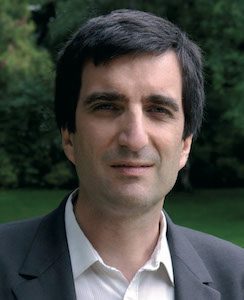Can the economy be reconciled with the environment? These ways of understanding reality seem so remote that reconciliation appears as complex or impossible for many people. Yet steps to reconcile economic activity to the logic of life exist.
First approach: engage in industrial ecology and social metabolism
Industrial ecology is a pragmatic approach to the industry, which proposes to consider industrial activities as ecosystems, i.e. as flows of matter, energy and information. A first innovation of this approach stems from the observation that there is no waste in nature.
By adopting this approach, a waste in an industry can be an input for another. Thus, the first stage of an industrial ecology project will be to make an inventory of the inputs and outputs of material and energy of each production unit of a territory, whether they belong to the same company or different companies. You can discover the first industrial ecology park, which sprouted without planning, the industrial symbiosis of Kalundborg.
The same approach can be adopted at a national level. The concept of social metabolism makes it possible to draw the metabolic profile of a country, and thus to analyze the material aspects of its internal and external trade. Analyses were made for countries like Ecuador, England and Austria, to calculate the costs associated with an economy based on the export of primary products (minerals, oil …).
Second approach: adopta a circular economy
Circular economy obeys to the same principles as industrial ecology, but extends the analysis to the model to the design and production of the objects themselves. The objective is to minimize waste not only on the production sites, but also in the whole economy. Thus, products, in circular economy, are designed from the start to be dismantled, the parts reassembled, reused or composted … The most successful approach in this area is the cradle to cradle approach.
From a technical perspective, the circular economy can grab inspiration from nature, following the principles of biomimicry. From an economic perspective, it emphasizes function over possession of the object, and therefore advocates for a functionality economy. The first two cradle to cradle principles have already been mentioned or are obvious: 1 / Any waste is a resource. 2 / Use renewable energy only. The third announces a social and environmental dynamic: 3 / Focus on the most locally appropriate solutions, the greatest possible diversity. Diversity is a source of resilience.

The mission of the Ellen MacArthur Foundation is to develop this approach.
Third approach: transition the economy
But how to reach a fully green economy, i.e. a purely circular economy, from the present state of the economy, which is often opposite to the principles we have set forth? This is the purpose of the perspective of the Great Transition.
The origin of the Transition as a transformative perspective is important to emphasize, since it was born from a citizens’ movement in the city of Totnes in the UK. The technical issues of the Transition are not evaded, but are placed in a civic and dynamic perspective.
The goals the transition movement aims at can be simply defined as an economy of well-being and sustainability.
You can find the manual of the Transition network on its web site.
Among the fundamental keys to understand the transition of our societies, note a fundamental ecological-human aspect: it is to align the business cycles to the biosphere cycles. These cycles are those ecosystems, the major cycles on Eearth. This vision places the man in the biosphere because they are also the cycles of human beings. Replacing the economy in social relations, and also in the individual cycles (rest day / night, basic needs, etc.), gives a new meaning and consistency to their actions and existence.
First Previous





